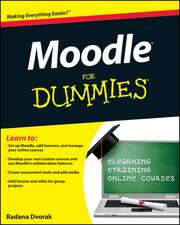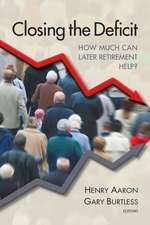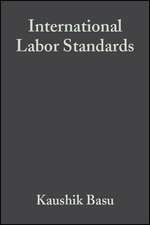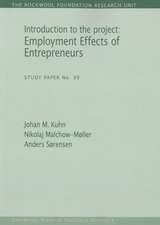Violence and Aggression in Sporting Contests: Economics, History and Policy: Sports Economics, Management and Policy, cartea 4
Editat de R. Todd Jewellen Limba Engleză Paperback – 24 oct 2013
The optimum level of violent or aggressive play in sporting contests is an empirical issue and this book contains chapters on violence and aggression in sports, concentrating on the reasons for the existence and persistence of such behavior. Following a chapter devoted to the history of violence and aggression in sports, subsequent chapters are designed to cover the breadth of international professional sports including American football, soccer, ice hockey, basketball, baseball, auto racing, and fighting sports. Each chapter will contain econometric analysis of violence and aggressiveplay in a given sport. The individual chapters will examine whether or not a given sports league or governing body should intervene to reduce violence, and where intervention is warranted, extent of appropriate interventions is evaluated. In addition to academics and students concerned with the economics and history of sport, the book’s emphasis on policies at the league and governing-body levels means this book will also be of interest representatives of those institutions.
.
| Toate formatele și edițiile | Preț | Express |
|---|---|---|
| Paperback (1) | 636.30 lei 6-8 săpt. | |
| Springer – 24 oct 2013 | 636.30 lei 6-8 săpt. | |
| Hardback (1) | 636.80 lei 6-8 săpt. | |
| Springer – 7 sep 2011 | 636.80 lei 6-8 săpt. |
Din seria Sports Economics, Management and Policy
- 18%
 Preț: 956.03 lei
Preț: 956.03 lei - 15%
 Preț: 633.53 lei
Preț: 633.53 lei - 15%
 Preț: 651.84 lei
Preț: 651.84 lei - 18%
 Preț: 1001.65 lei
Preț: 1001.65 lei - 24%
 Preț: 870.24 lei
Preț: 870.24 lei - 18%
 Preț: 949.55 lei
Preț: 949.55 lei - 18%
 Preț: 897.14 lei
Preț: 897.14 lei - 18%
 Preț: 892.28 lei
Preț: 892.28 lei - 15%
 Preț: 687.84 lei
Preț: 687.84 lei - 18%
 Preț: 888.49 lei
Preț: 888.49 lei - 18%
 Preț: 894.03 lei
Preț: 894.03 lei - 24%
 Preț: 889.35 lei
Preț: 889.35 lei - 18%
 Preț: 777.20 lei
Preț: 777.20 lei - 18%
 Preț: 789.03 lei
Preț: 789.03 lei - 18%
 Preț: 777.20 lei
Preț: 777.20 lei - 18%
 Preț: 1002.44 lei
Preț: 1002.44 lei - 15%
 Preț: 695.19 lei
Preț: 695.19 lei - 15%
 Preț: 635.15 lei
Preț: 635.15 lei -
 Preț: 386.61 lei
Preț: 386.61 lei - 18%
 Preț: 953.97 lei
Preț: 953.97 lei - 15%
 Preț: 637.59 lei
Preț: 637.59 lei
Preț: 636.30 lei
Preț vechi: 748.59 lei
-15% Nou
Puncte Express: 954
Preț estimativ în valută:
121.77€ • 132.22$ • 102.29£
121.77€ • 132.22$ • 102.29£
Carte tipărită la comandă
Livrare economică 23 aprilie-07 mai
Preluare comenzi: 021 569.72.76
Specificații
ISBN-13: 9781461430254
ISBN-10: 1461430259
Pagini: 212
Ilustrații: XII, 200 p.
Dimensiuni: 155 x 235 x 11 mm
Greutate: 0.3 kg
Ediția:2012
Editura: Springer
Colecția Springer
Seria Sports Economics, Management and Policy
Locul publicării:New York, NY, United States
ISBN-10: 1461430259
Pagini: 212
Ilustrații: XII, 200 p.
Dimensiuni: 155 x 235 x 11 mm
Greutate: 0.3 kg
Ediția:2012
Editura: Springer
Colecția Springer
Seria Sports Economics, Management and Policy
Locul publicării:New York, NY, United States
Public țintă
ResearchTextul de pe ultima copertă
Sporting contests have provided mass entertainment throughout history, and today generate revenues of approximately $200 billion annually in the US alone. Like in the entertainment industry, the modern sports industry’s revenues are based on the entertainment value of output and more entertaining sporting contests imply greater game-day attendance, television revenues and sales of merchandise. Research by economists has attempted to understand and explain behavior as it relates to sporting contests, showing that standard microeconomic theory used to explain consumer and producer behavior can also be applied to the behavior of fans, team owners, league executives and players. One commonality among many ancient and modern sports is the existence of violence and aggression in contests. Compare, for example, a modern NASCAR race with a Roman chariot race: Only the technology has changed. From the perspective of an economist, violence in sporting contests is an outcome of the forces of supply and demand, and the phenomenon exists because fans respond to it. Spectator preferences for violence bid up the monetary return to this behavior, and the rational response is a more violent or aggressive output.
The optimum level of violent or aggressive play in sporting contests is an empirical issue and this book contains chapters on violence and aggression in sports, concentrating on the reasons for the existence and persistence of such behavior. Following a chapter devoted to the history of violence and aggression in sports, subsequent chapters are designed to cover the breadth of international professional sports including American football, soccer, ice hockey, basketball, baseball, auto racing, and fighting sports. Each chapter will contain econometric analysis of violence and aggressiveplay in a given sport. The individual chapters will examine whether or not a given sports league or governing body should intervene to reduce violence, and where intervention is warranted, extent of appropriate interventions is evaluated. In addition to academics and students concerned with the economics and history of sport, the book’s emphasis on policies at the league and governing-body levels means this book will also be of interest representatives of those institutions.
The optimum level of violent or aggressive play in sporting contests is an empirical issue and this book contains chapters on violence and aggression in sports, concentrating on the reasons for the existence and persistence of such behavior. Following a chapter devoted to the history of violence and aggression in sports, subsequent chapters are designed to cover the breadth of international professional sports including American football, soccer, ice hockey, basketball, baseball, auto racing, and fighting sports. Each chapter will contain econometric analysis of violence and aggressiveplay in a given sport. The individual chapters will examine whether or not a given sports league or governing body should intervene to reduce violence, and where intervention is warranted, extent of appropriate interventions is evaluated. In addition to academics and students concerned with the economics and history of sport, the book’s emphasis on policies at the league and governing-body levels means this book will also be of interest representatives of those institutions.
Caracteristici
Includes contributions by leading sports economists which address the issues of violence and aggression across international sports. Bases the analysis of violence and aggressive play in modern sports in a historical context. Contains a rigorous examination of league or governing-body regulations and policies vis-à-vis violence and aggression based on institutional framework and econometric analysis. Includes supplementary material: sn.pub/extras















